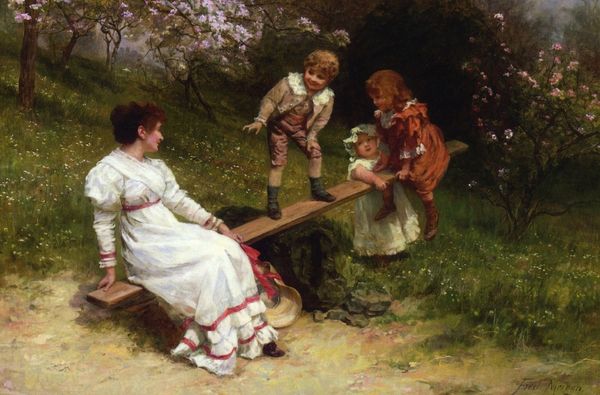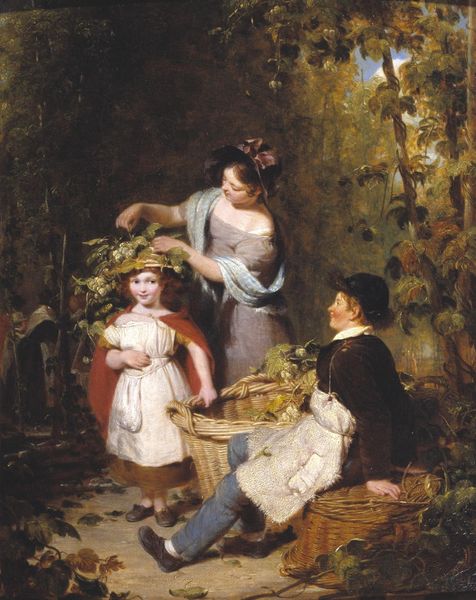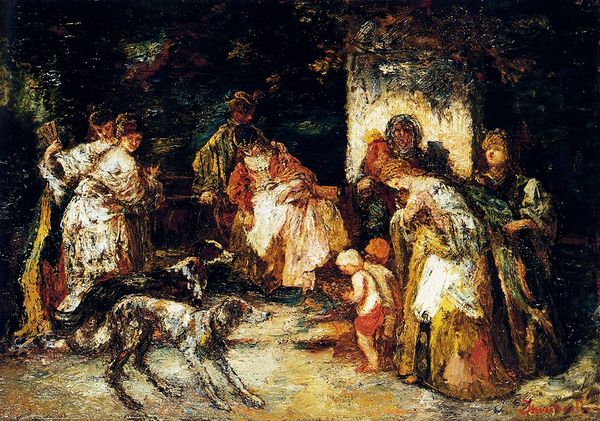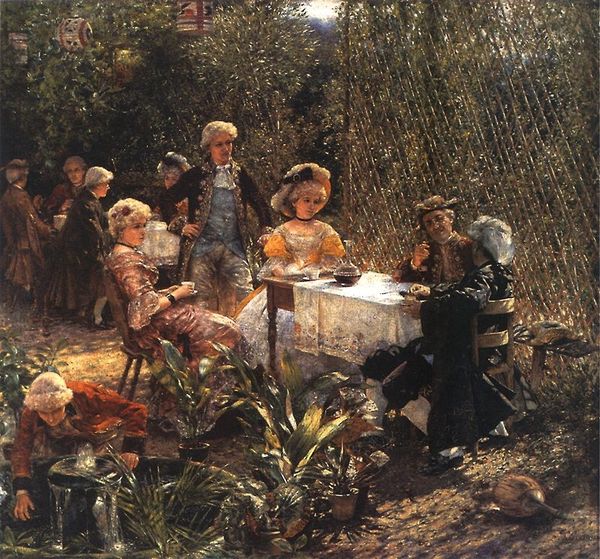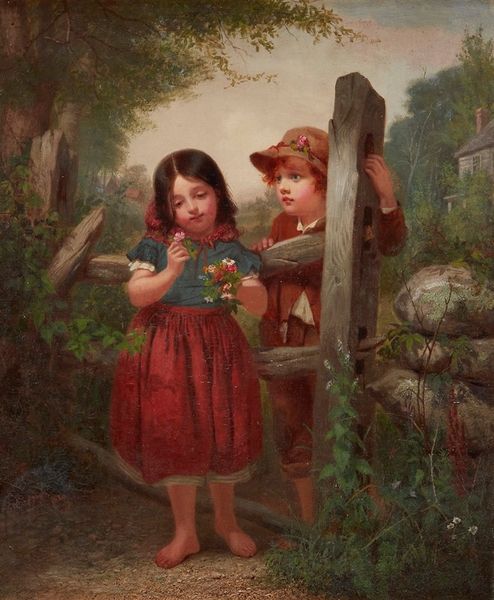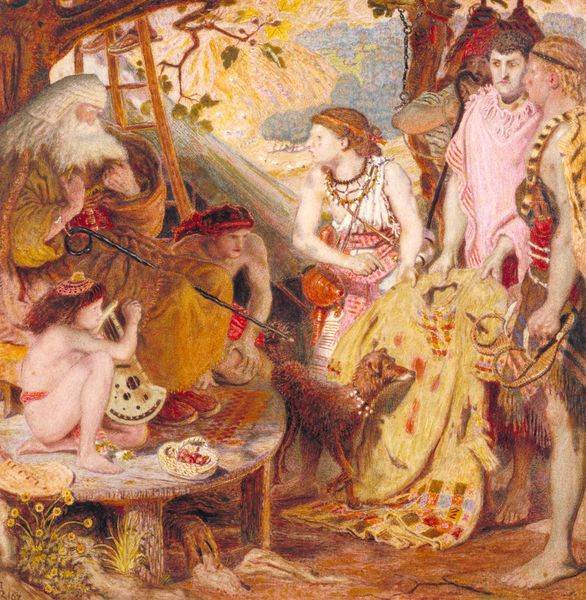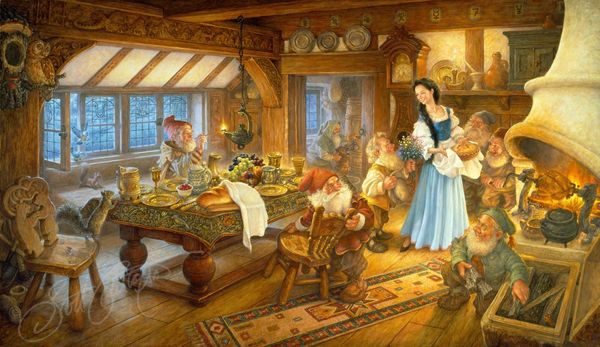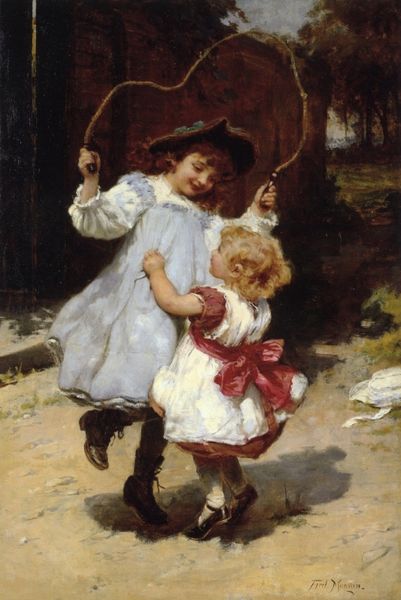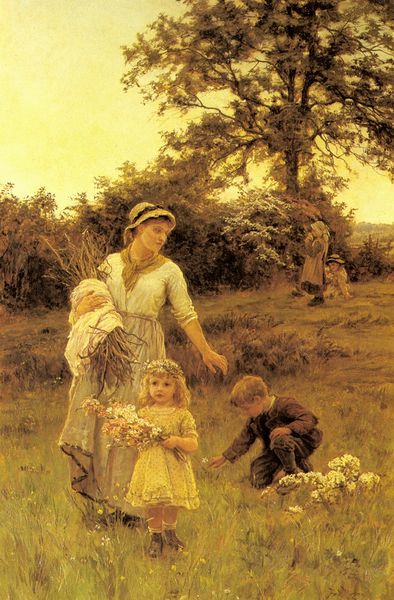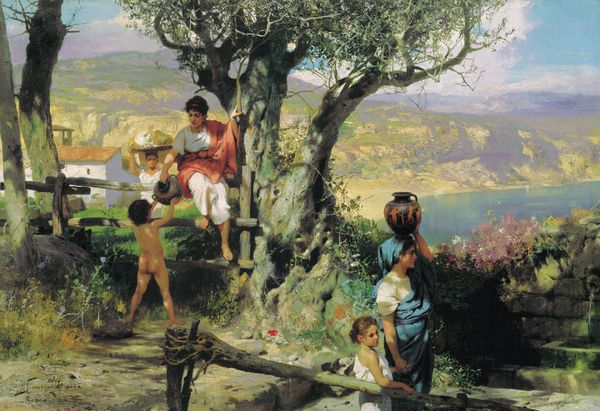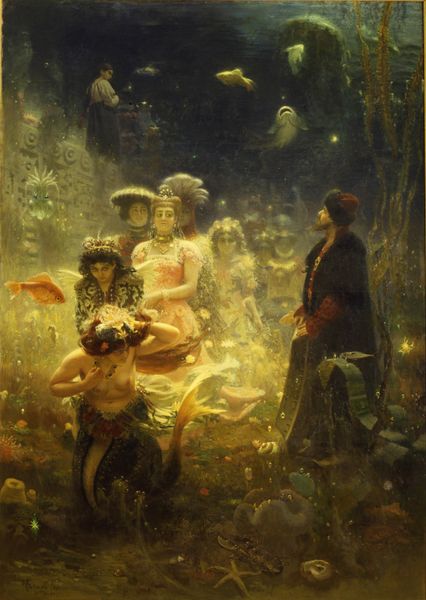
oil-paint
#
portrait
#
impressionism
#
oil-paint
#
oil painting
#
neo expressionist
#
romanticism
#
genre-painting
#
portrait art
#
fine art portrait
#
realism
Copyright: Public domain
Curator: Frederick Morgan, the artist, painted "Grandfather's Birthday" using oil on canvas; this genre piece offers such a heartwarming peek into Victorian life. Editor: It feels so…soft. There's a diffused light, almost like a memory being recalled. It’s definitely sentimental and a bit idealized, wouldn’t you say? Curator: Idealized perhaps, but think of the labor involved. See how those children are positioned near the old, rustic stone steps. It all alludes to their toils with natural materials such as wheat, crops and rocks. Also notice the types of flowers, fruits and other harvestable resources. There seems to be evidence of class dynamics at play too when accounting for the grandfather's occupation. Editor: Absolutely, and looking through the lens of social history, that sentimentality takes on a different tone. Were these scenes a means of reinforcing particular societal values? It's fascinating to think about how it relates to, say, ideas around childhood innocence and idealized familial bonds in a time of massive social upheaval. It's tempting to romanticize the past, but art like this offers us a window to analyze some historical frameworks and inequalities. Curator: It's not just about "seeing," it is also about engaging with the surface quality itself! Oil paints at this time provided artistis with a vehicle to evoke mood and texture while exploring process, application, manipulation and many different finishing styles. Morgan creates a rich surface, using texture, brushwork, glazing and more to draw the viewers to explore these same visual elements through light. Editor: Precisely! Even the details contribute. Look at the composition, it uses color contrast for dramatic effect, notice the clothing worn by the young people versus the darker, rougher textures displayed behind them. It amplifies the emotional connection— or disconnect, when viewed today through our current set of social values— doesn’t it? It's like he's inviting the viewer into the space between lived experience and manufactured narrative. Curator: True. Frederick Morgan's process is to illustrate visual materials, the lived and breathed stuff that makes-up human life. He asks, how does work ethic reflect family in everyday life? And what are the labor resources required to create a sense of beauty or familial support. I think Morgan makes this evident! Editor: A lovely, complex layering of narratives, then—between family, gender, labor, social identity, materiality and its representation! I definitely have a new appreciation for that now.
Comments
No comments
Be the first to comment and join the conversation on the ultimate creative platform.
